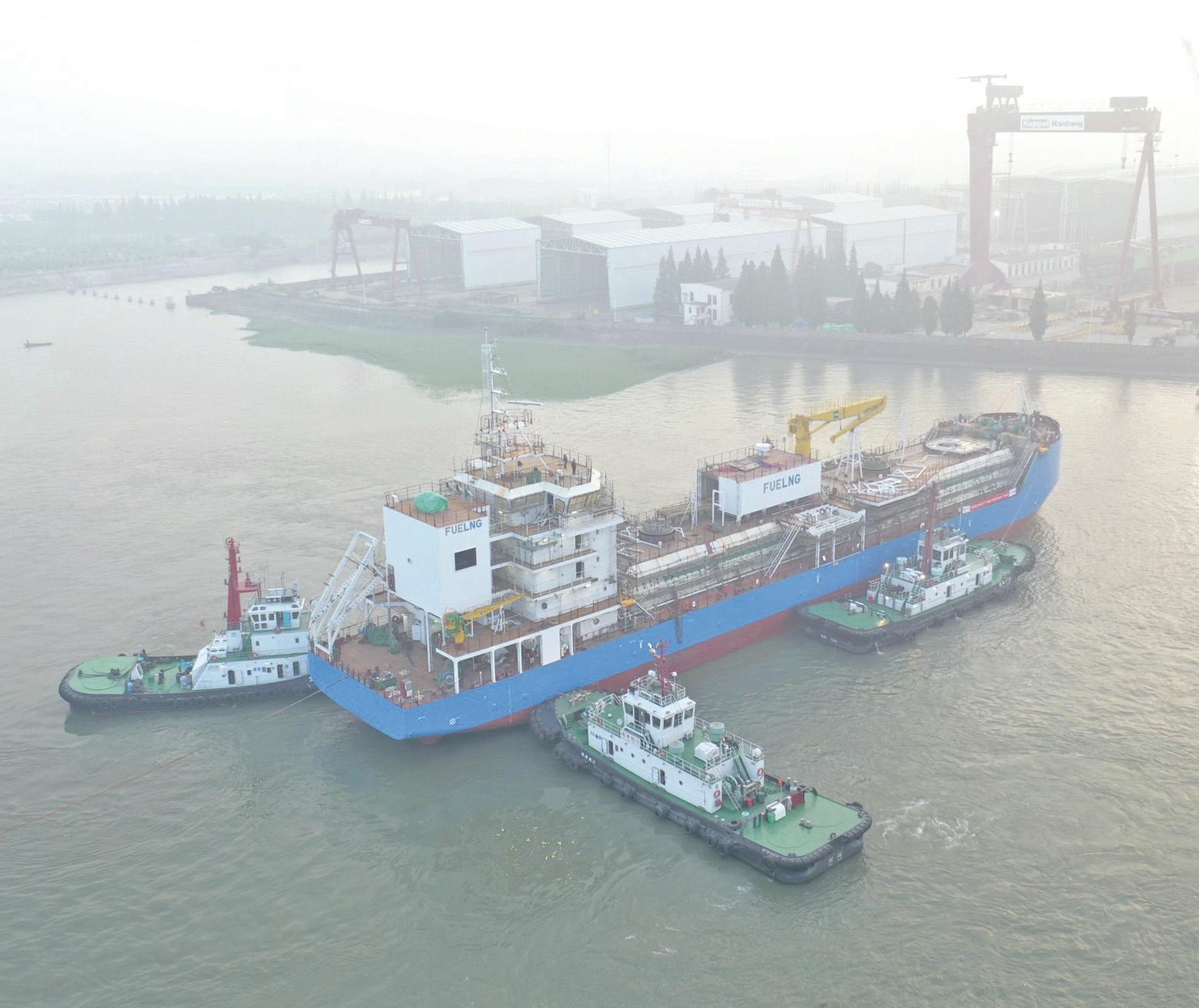
3 minute read
Asia Viewpoint
SINGAPORE EXPANDS ITS LNG HUB STATUS
Singapore is on track to expand its LNG bunkering services in 2020 cementing its status of major bunkering hub for South East Asia, writes Anne-Marie Causer
Later this year, The Maritime and Port Authority of Singapore (MPA) will become the first port authority in South East Asia to have its own LNG bunkering vessel providing regular ship-toship LNG bunkering services to customers.
The new 7,500m 3 vessel, owned by FueLNG, a joint venture between Keppel Offshore & Marine Ltd (Keppel O&M) and Shell Eastern Petroleum (Pte) Ltd, has just been launched from Nantong Shipyard in China.
BOOSTING AVAILABILITY
Saunak Rai, general manager of FueLNG, says: “There is a growing number of LNG-fuelled vessels in the world and FueLNG is well-positioned to seize LNG bunkering opportunities in Singapore." "Building Singapore's first LNG bunkering vessel demonstrates FueLNG's confidence in LNG as a marine fuel. The vessel will enhance our range of services and boost our efforts to further increase the availability of LNG in the market.”
The vessel supports initiatives implemented by the MPA to increase the adoption of LNG as a marine fuel and grow Singapore as a global LNG bunkering hub.
FueLNG's bunkering vessel will further enhance the LNG bunkering infrastructure in Singapore and support the growth of the industry through the development of best practices such as technical standards.
Expansion of the port's LNG bunkering infrastructure will also create more opportunities in adjacent sectors in Singapore, such as ship design, construction, operation and repair, as well as in LNG trading.
The vessel, which is able to run on both LNG and marine diesel oil, is currently being built to the proprietary MTD 7500U LNG design developed by Keppel O&M's technology arm, Keppel Marine and Deepwater Technology (KMDTech).
Key features of the vessel include high manoeuvrability which enables bunkering without tug assistance, compatibility with a wide range of vessels, as well as propulsion and power management systems that optimise fuel consumption. The vessel has a filling rate range of up to 1000m3 of LNG per hour and is able to supply LNG to various types of vessels at heights ranging from 3m to 23m above water level.
FUTURE FUEL
MPA has played a key role in the initiatives to establish Singapore as an LNG bunker-ready port.
It says it is committed to providing a broad range of fuel solutions, including LNG, to meet the future energy needs of the global shipping industry.
MPA's LNG bunkering pilot programme which spans from 2017 to 2020, has seen the port test operational protocols, gain operational experience and continue to beef up Singapore's capabilities to ensure LNG bunkering is carried out safely, efficiently and reliably.
A year ago, Pavilion Energy performed the first commercial ship-to-ship LNG bunkering at the port.
The operation, the first of such in Singapore, comprised a reload of 2,000 cubic metres of LNG onto a small-scale tanker at the newly-modified secondary jetty of the Singapore LNG (SLNG) terminal, followed by a ship-to-ship transfer to the receiving heavy-lift commercial vessel.
Back in 2018, Total Marine Fuels agreed to long-term charter a purpose-built LNGBV from Pavilion Gas. The deal included an LNG supply arrangement under which Pavilion, backed by Temasek Holdings, provides the LNG volumes required to bunker Total's customer's ships in Singapore.
Both FueLNG and Pavilion Gas have received grants of S$3.0M (US$2.2M) to put towards their LNGBV newbuilds as part of the MPA's LNG Bunkering Pilot Programme.
The port authority is also co-funding the construction of eight LNG-fuelled vessels that will serve in local waters. The first two, a pair of tugs, have already been delivered to Keppel SMIT Towage and Maju Maritime.
8 The LNG
bunkering vessel will enable FueLNG to provide regular ship-to-ship LNG bunkering services











